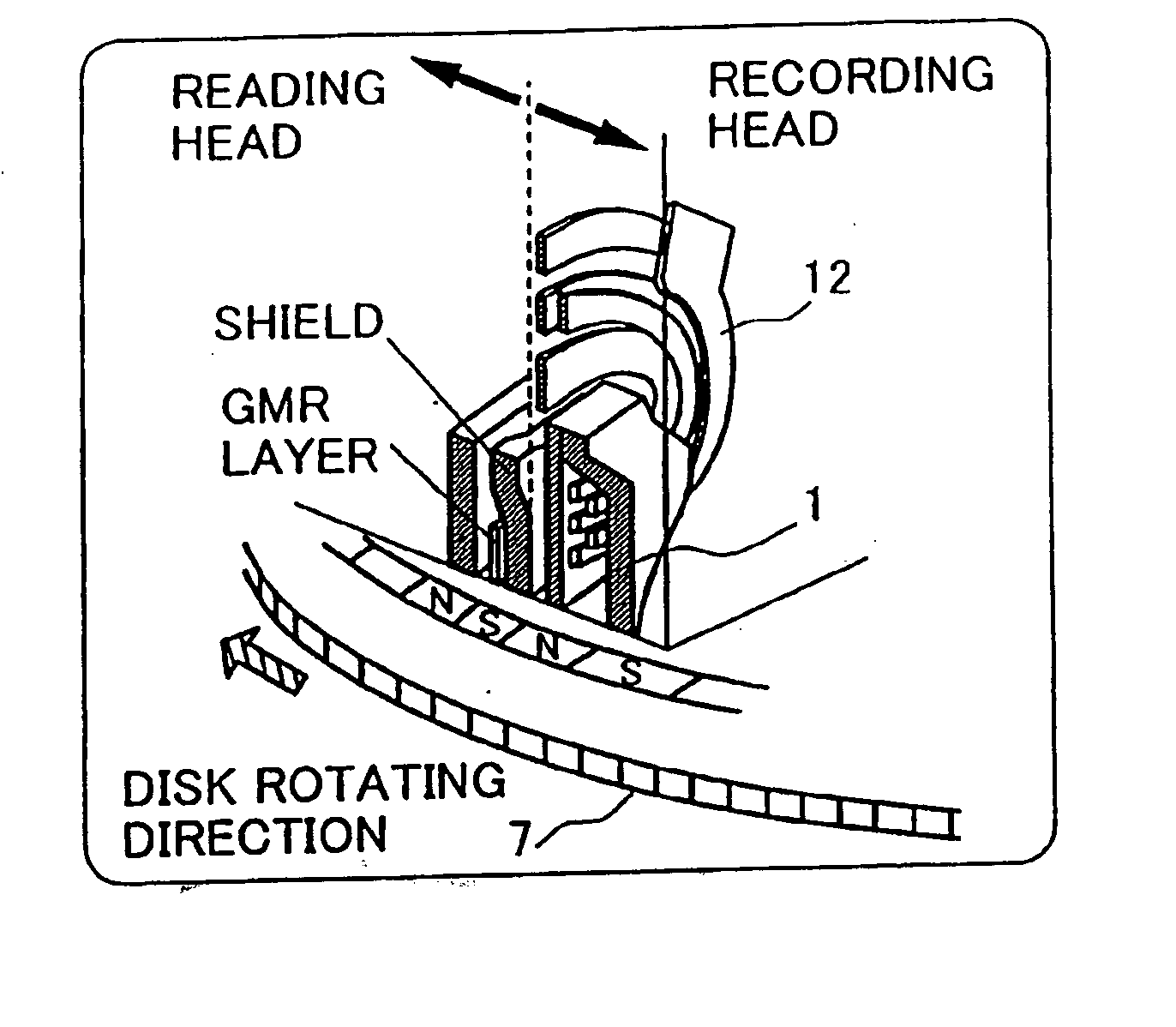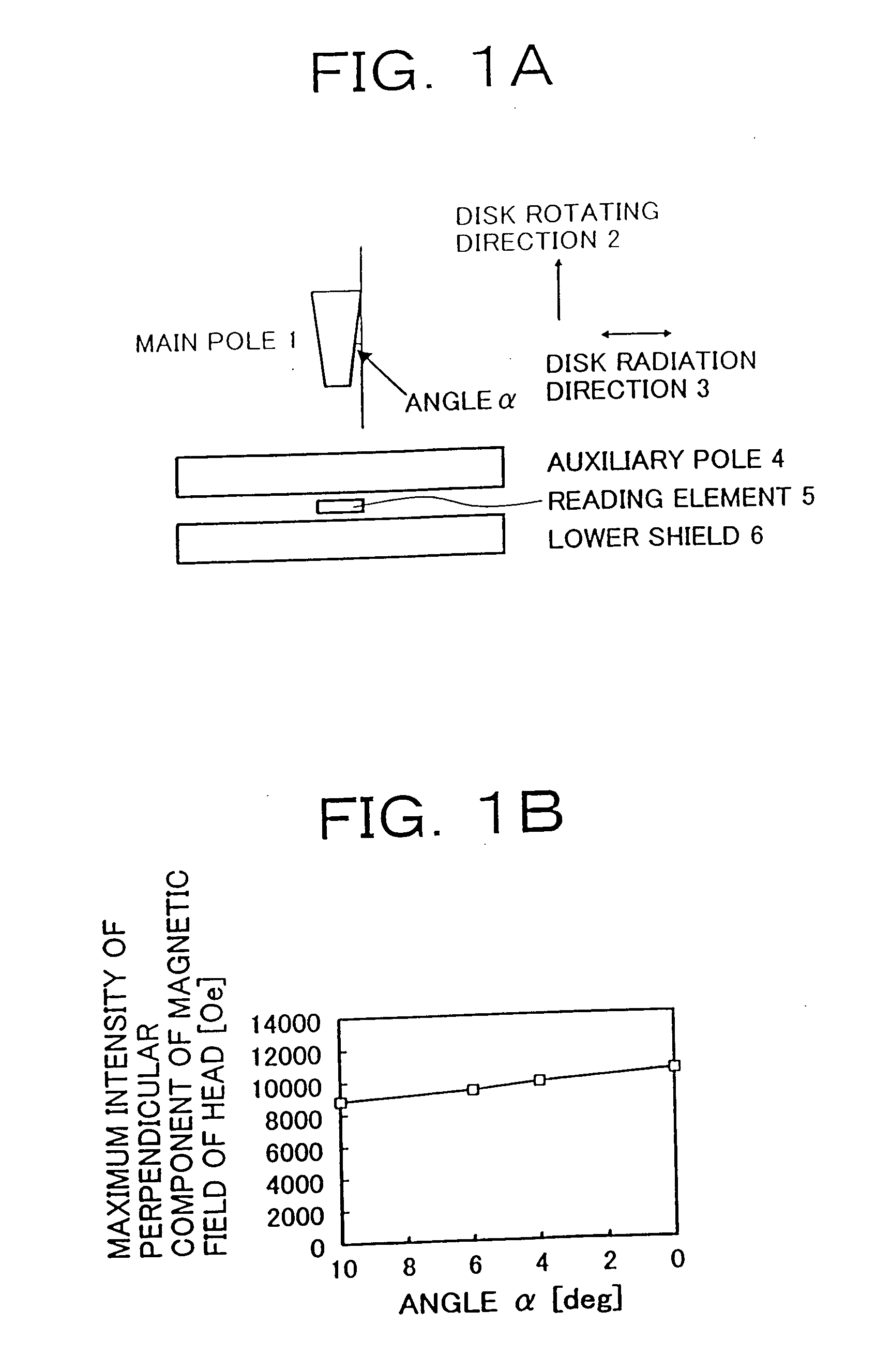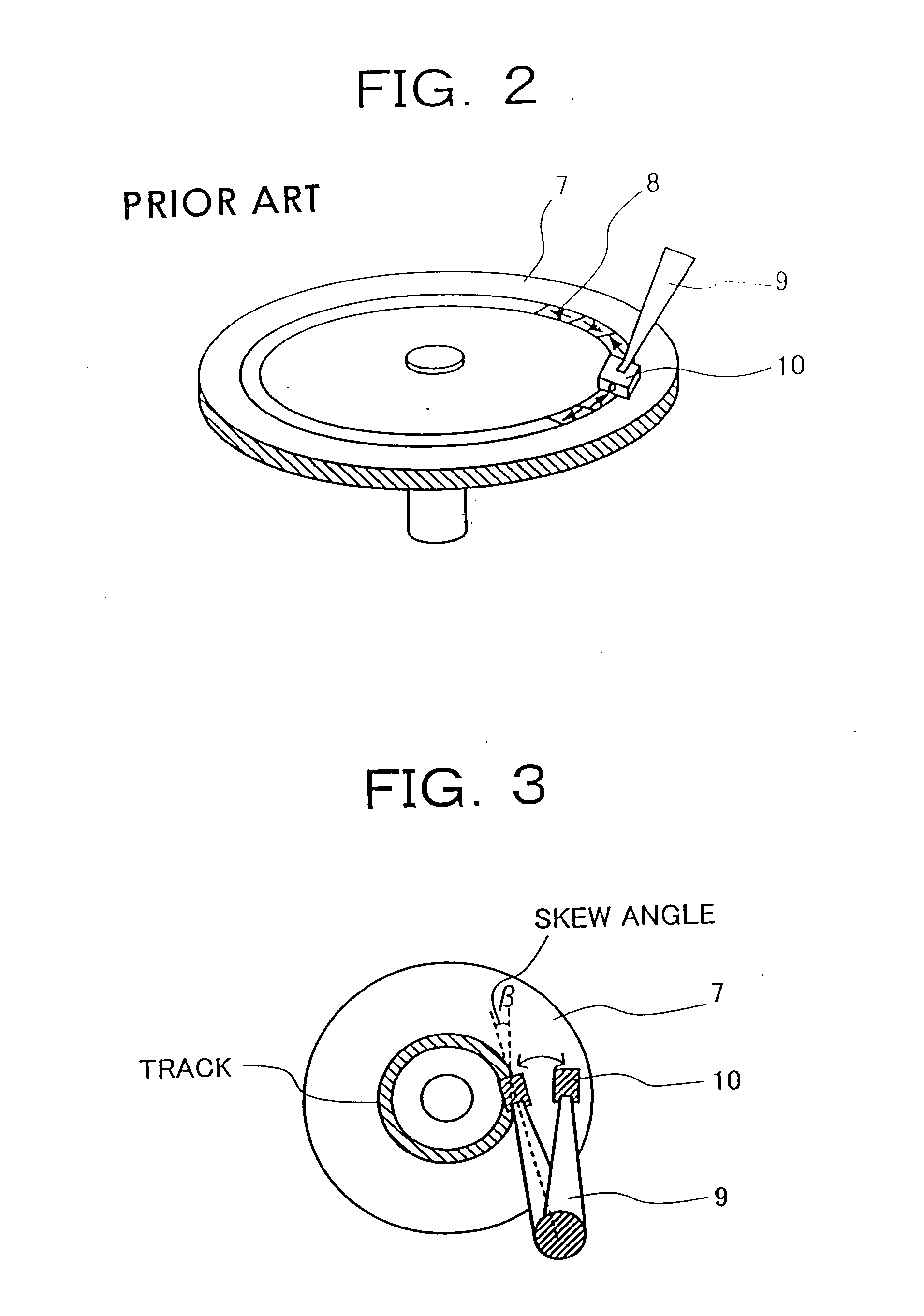Single pole type recording head with tapered edges
a single-pole type, tapered edge technology, applied in the direction of magnetic recording heads, data recording, instruments, etc., can solve the problems of hindering the improvement of track density, reducing the length of bits to be recorded, and the area recording density of existing in-plane recording systems cannot be increased, so as to improve thermal fluctuation resistance, prevent a decrease in magnetic field intensity, and the effect of high area recording density
- Summary
- Abstract
- Description
- Claims
- Application Information
AI Technical Summary
Benefits of technology
Problems solved by technology
Method used
Image
Examples
first exemplary embodiment
[0057]FIG. 2 is a schematic view of a magnetic disk storage apparatus according to a preferred embodiment of the present invention illustrating the relationship between a magnetic disk 7 and a magnetic head 10 (FIG. 2 is not to scale). The magnetic disk storage apparatus has a rotating magnetic disk 7 and a magnetic head 10 secured to one end of a support 9. The apparatus reads and writes magnetization signals 8 on the magnetic disk 7. FIG. 3 is a schematic view when the magnetic head 10 is moved on the rotating magnetic disk 7 by swinging a support 9 (not to scale). In this case, a skew angle β is formed between the magnetic head 20 supported by support 9 and a tangent drawn to a track on the magnetic disk 7. The skew angle β changes as the head is rotated across various tracks (concentric circles on the disk 7) and is typically within a range of about ±30°.
[0058]FIG. 4 is a schematic view showing a magnetic head for perpendicular recording according to a preferred embodiment of t...
second exemplary embodiment
[0065]FIG. 12 is a schematic view for a presently preferred manufacturing method according to this invention (not to scale). FIG. 12A shows a step of forming a resist pattern 24 on an inorganic insulating layer 23. Al2O3 may be preferred for the inorganic insulating layer, but SiC, AlN, Ta2O5, TiC, TiO2, SiO2 and other materials may also be used. The resist pattern 24 is exposed using a KrF excimer laser stepper. As the resist 24, a positive resist such as TDUR-P201 manufactured by Tokyo Ohka Kogyo Co., Ltd. may be used. When a resist of 0.7 μm thickness is formed, a 0.2 μm size can be resolved.
[0066]FIG. 12B shows a, step of etching the inorganic insulating layer 23 by using the resist 24 as a mask. When Al2O3 is used for the resist 24, BCl3 or a gas mixture of BCl3 and Cl2 may be used as an etching gas. In addition, when AlN is used, the chlorine type gas described above is preferred for etching. In a case where easily etchable Ta2O5, TiC, TiO2, SiO2, SiC and similar materials ar...
third exemplary embodiment
[0073]FIG. 13 is an alternate schematic view of a medium-head system for a magnetic disk apparatus according to a preferred embodiment of the present invention (not to scale). As briefly described above, the magnetic disk storage apparatus writes and reads magnetization signals on a magnetic disk 7 using a magnetic head 28 attached to a slider 10 fixed to one end of a suspension arm 9. The magnetic head 28 moves in the radial direction of the disk 7 (seeking operation) by the swinging operation of the suspension arm 9. Also as described above, a skew angle β (of approximately ±30°) is set as shown in FIG. 13.
[0074]FIG. 14 is a schematic view for the relation between the writing / reading head for perpendicular recording and a magnetic disk 7. The perpendicular writing / reading head comprises a writing head part 30 and a reading head part 31. The writing head is a single pole type recording head and the reading head has a structure in which a reading device is disposed between first an...
PUM
| Property | Measurement | Unit |
|---|---|---|
| angle | aaaaa | aaaaa |
| angle | aaaaa | aaaaa |
| thickness | aaaaa | aaaaa |
Abstract
Description
Claims
Application Information
 Login to View More
Login to View More - R&D
- Intellectual Property
- Life Sciences
- Materials
- Tech Scout
- Unparalleled Data Quality
- Higher Quality Content
- 60% Fewer Hallucinations
Browse by: Latest US Patents, China's latest patents, Technical Efficacy Thesaurus, Application Domain, Technology Topic, Popular Technical Reports.
© 2025 PatSnap. All rights reserved.Legal|Privacy policy|Modern Slavery Act Transparency Statement|Sitemap|About US| Contact US: help@patsnap.com



